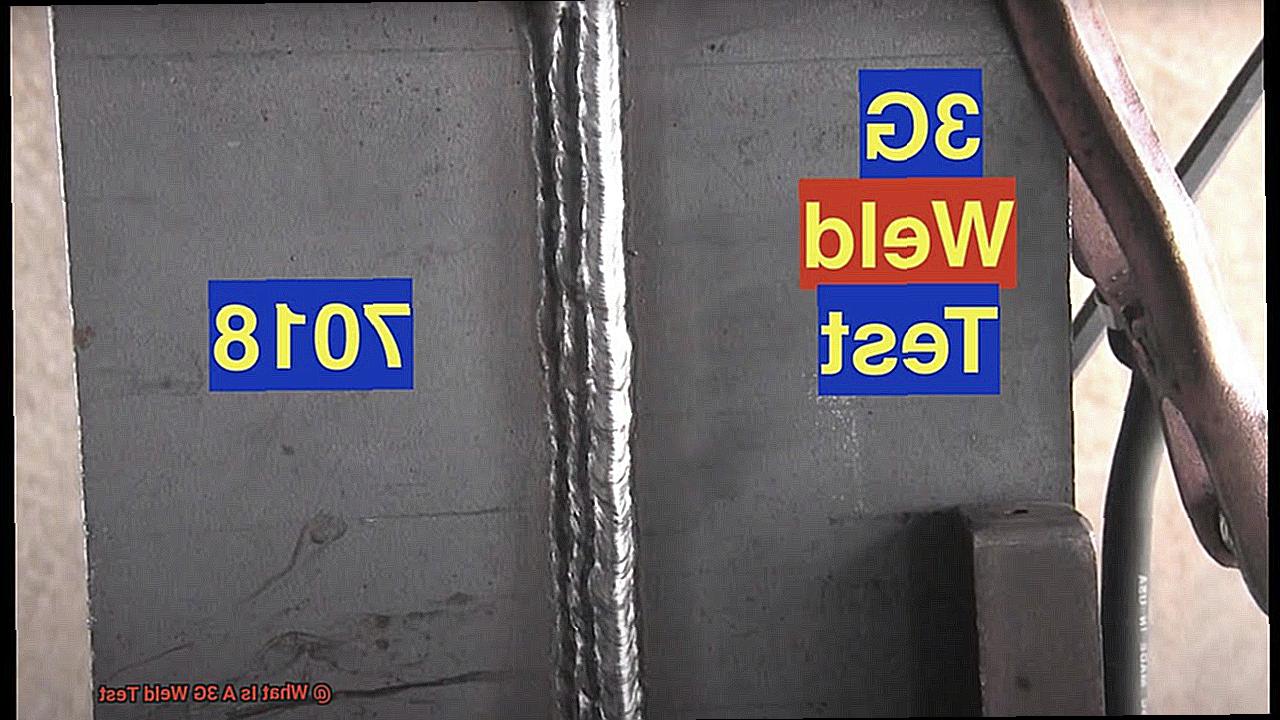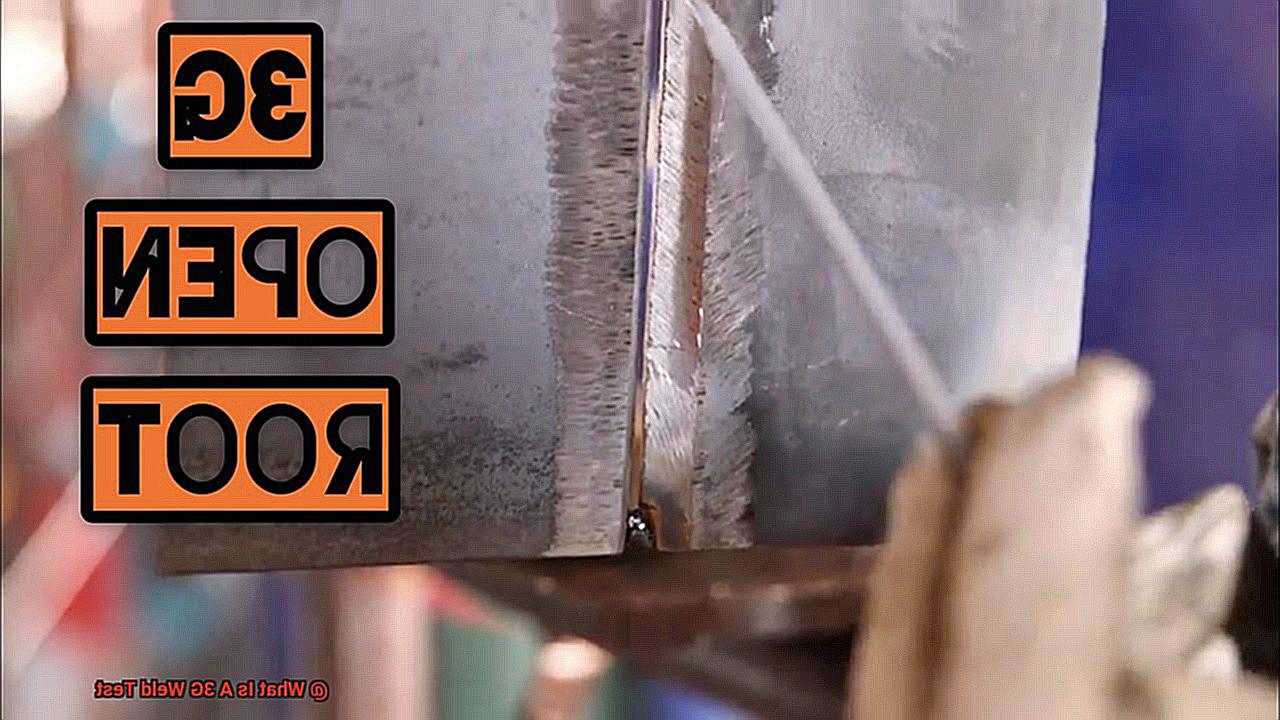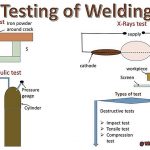Welcome to our blog, where we delve into the intricate world of welding.
Today, we’ll be exploring a fundamental aspect of welding – the 3G weld test. This test is vital in ensuring the strength and durability of welded joints, making it an essential skill for both seasoned welders and beginners alike.
Get ready to broaden your understanding and elevate your welding abilities to new heights.
What Is A 3G Weld Test?
Contents
And to ensure that welders possess these essential qualities, they must undergo various certification tests, including the 3G weld test.
But what exactly is the 3G weld test and why is it so crucial for welders? Let’s delve deeper into this subject to understand its significance.
Understanding Welding Positions:
Before we dive into the specifics of the 3G weld test, let’s first grasp the concept of welding positions. These positions refer to the angles at which two metals are joined together. There are four main types of welding positions – horizontal, flat, vertical, and overhead.
Now, different welding positions require specific types of welds – groove and fillet. Fillet welds are used for joining two metal parts vertically or at a slight angle, while groove welds are made within a groove and require full penetration for strong results.
To make things more interesting, each welding position is assigned a letter – F for fillet welds and G for groove welds. However, different organizations have their own names for welding positions in their tables, such as AWS D1.1, ASME IX, and ISO 15614-1.
Understanding the 3G Weld Test:
Now, let’s talk about the main topic – the 3G weld test. The letter G in 3G represents groove welds, and the number 3 signifies the position – vertical.
In this test, a predetermined coupon is used to perform welding in the vertical position. The coupon is then inspected by a certified welding inspector to ensure it meets all required criteria. This test evaluates a welder’s ability to perform in all positions – vertical, horizontal, and overhead – making it an essential step in becoming a certified welder.
Understanding Welding Positions
Welding is a fundamental proficiency in numerous industries, including manufacturing and construction. For welders, the pinnacle of their skills is put to the test in the 3G weld test, which evaluates their aptitude in all positions. As an authority on welding positions, I will share my expertise and insights on the four primary positions and their impact on 3G weld tests.
So, let us delve into the intricate world of welding positions.
The Four Main Welding Positions
The flat, horizontal, vertical, and overhead positions are the four principal welding positions utilized in a variety of welding applications. Each position presents its distinct challenges and considerations, making it essential for welders to possess a comprehensive understanding of them.
Flat Position
In the flat position, the weld joint is laid out horizontally, and the welder performs welding from above. This position is often employed for welding flat surfaces such as plates or sheets. The flat position is deemed the simplest position for welding and is usually utilized by novices or less experienced welders.

Horizontal Position
In the horizontal position, the weld joint is angled at 45 degrees to the ground, with the welder performing welding from one side. This position is commonly used for welding pipes and cylinders. It necessitates more expertise and precision than the flat position as gravity can influence the flow of molten metal.
Vertical Position
The vertical position involves placing the weld joint vertically, with the welder performing welding from bottom to top. This position is used for welding joints that are in an upright stance, such as walls or structures. It requires advanced skills and techniques as gravity can pull the molten metal downwards, posing a challenge in achieving proper penetration and fusion.
Overhead Position
The overhead position is deemed the most demanding of all welding positions.
The Importance of Welding Certification
As a welder, staying ahead in the constantly evolving welding industry is crucial. One powerful way to achieve this is by obtaining welding certifications. These certifications not only validate your skills and knowledge but also open up a world of opportunities for you.
But why are welding certifications so significant? Let’s explore further.
Validate Your Abilities
Welding certifications serve as tangible proof that you possess the necessary skills and knowledge to excel in your job. As a certified welder, you have undergone rigorous training and successfully passed tests that demonstrate your proficiency in various welding procedures and codes. This not only instills confidence in employers but also sets you apart from non-certified welders.
Expand Your Career Prospects
With a welding certification, you can explore job opportunities in diverse industries, from construction to manufacturing. The demand for certified welders is high, making it easier for you to secure employment. Moreover, with the flexibility to work in different environments and gain varied experiences, you can expand your career prospects significantly.
Reduce Recertification Expenses
Welding certifications have expiration dates, requiring recertification to maintain them. However, by obtaining multiple certifications, you can decrease recertification costs and save money in the long run. For instance, if you hold both structural welding and pipe welding certifications, you may only need to recertify once every few years instead of recertifying each certification separately.
Showcase Valuable Knowledge and Skills
Each welding certification covers specific procedures and codes, making them valuable proofs of your expertise in those areas. For example, a 3G certification demonstrates your ability to perform vertical up welding, while a 6G certification showcases your proficiency in welding pipes at an inclined angle. By obtaining diverse certifications, you can showcase your versatility as a welder and increase your value in the job market.
Types of Welds Used in 3G Tests
Welding is a critical skill in various industries, from construction to manufacturing. Skilled welders are highly sought after, and one way to showcase your expertise is through certification. The 3G weld test plays a vital role in the welding certification process, and in this article, we will delve into the different types of welds used in this test and their execution.
The two most commonly used welds in 3G tests are the groove weld and the fillet weld. The groove weld is a type of butt joint where two metal pieces are joined together at their edges. It is frequently utilized in structural welding and can be single or double-sided. On the other hand, the fillet weld is a type of lap joint where two metal pieces overlap and are welded at the point of intersection. Fillet welds are commonly used in sheet metal fabrication as well as in industries such as automotive and shipbuilding.
To perform a 3G test successfully, proper preparation and equipment selection are crucial. The materials must be impeccably cleaned to eliminate any contaminants that may affect the quality of the weld. Additionally, selecting the appropriate welding process, such as gas metal arc welding (GMAW) or shielded metal arc welding (SMAW), based on material thickness and joint configuration is essential.
Once everything is set up, the actual welding process begins. The welder starts at one end of the joint and lays down a series of stringer beads
straight lines of welding deposited along the joint. The number of passes required for a 3G test may vary based on the welding process and material thickness, but it typically ranges from two to five passes. During each pass, maintaining proper arc length, travel speed, and angle is crucial for consistent penetration and fusion between the base metals.
Performing a 3G Weld Test
Embarking on a 3G weld test can be a perplexing and thrilling experience for welders. It marks the beginning of the journey towards certification, a chance to demonstrate their expertise. This test involves welding in the vertical position, utilizing either uphill or downhill techniques to create a fillet or groove weld. But before delving into the intricacies of this test, let’s first grasp the fundamentals of welding positions.
Welding positions refer to the diverse angles utilized to join metals together. There are four main types: horizontal, flat, vertical, and overhead. Each position presents its own unique challenges, but mastering all four is crucial for any professional welder.
Now, let’s focus on the two most common types of welds used in a 3G test: fillet and groove welds. Fillet welds are used for vertically joining two metal parts or at a slight angle, while groove welds are created in the groove and require full penetration for strong welds. These welds are designated by special letters, with “F” representing fillet welds and “G” representing groove welds.
The American Welding Society (AWS), the American Society of Mechanical Engineers (ASME), and ISO have different names for welding positions in their tables. For instance, AWS uses a combination of numbers and letters such as “1G,” “2G,” “3G,” etc., while ASME opts for terms like “Flat,” “Horizontal,” “Vertical,” etc. It’s vital to acquaint yourself with these various designations to ensure precision and reliability in your work.
But why is the 3G test particularly significant? Well, it’s because it assesses a welder’s skill and capability to produce robust and precise fillet or groove welds in the vertical position. And when it comes to welding certifications, this is an indispensable skill to possess.
Challenges and Tips for Passing the 3G Test
You may already be familiar with the perplexity and burstiness of this test. However, do not let these concepts discourage you. With proper preparation and following certain tips, you can pass the 3G test successfully.
Before delving into the tips, it’s important to understand that the AWS Structural Welder Qualification Test covers multiple positions, including 1G, 2G, 3G, 1F, 2F, and 3F. Passing the 3G test does not automatically qualify a welder for the overhead 4G position. The test can be taken with a ¾” plate for unlimited thickness or a 3/8” plate for up to ¾” thickness, depending on the welder’s preference and skill level.
Now let’s move on to the challenges and tips for passing the 3G test. The first challenge is proper preparation. This includes cleaning the bevel edges and removing any mill scale from the plate. The root pass can be run as a stringer or weave, but it’s crucial to maintain proper electrical stick out. Additionally, interpass cleaning is essential for all passes to prevent slag inclusion or undercutting.
Next comes the hot pass which must be done as a weave with special attention paid to side wall fusion. Depending on previous passes, one or two cap passes may be needed to complete the test within code regulations for reinforcement and undercutting. If using stringers, approximately six passes may be needed in total.
After completing the welding portion of the test, specimens are cut from the plate and subjected to root and face bend tests without backing bar support. This is where burstiness comes into play as there is no set number of passes required for each welder.
Industries That Require 3G Certified Welders
The Field of Welding: Exploring the Need for 3G Certified Professionals in Diverse Industries
Are you considering a career in welding? If so, you are part of a growing trend. With an increasing demand for skilled welders in various industries, now is the ideal time to enter this field. According to the American Welding Society (AWS), by 2027, there will be a crucial need for new welding professionals, providing numerous opportunities for those seeking to start or transition their career paths.
But what are the underlying reasons behind the high demand for welders? Let us delve deeper into the key factors driving this need and the industries where welding plays a vital role.
The Skills Gap and Critical Need for Welding Professionals
One of the primary drivers of the high demand for welders is the skills gap in the current workforce. As experienced welders near retirement age, there is a significant shortage of proficient professionals to take over their roles. This, coupled with industry growth and projected attrition rates, has led to a critical need for new welding professionals. The AWS predicts an average of 20,500 annual job openings between 2023-2027.
Six Primary Occupations That Require Welding:
- Structural Iron and Steel Workers
- Sheet Metal Workers
- Boilermakers
- Pipefitters and Steamfitters
- Welding, Soldering, and Brazing Machine Setters, Operators, and Tenders
Fabricators and Fitters
As evident, welding is an integral function in various occupations, ranging from construction and manufacturing to repair and maintenance.
The Current State of the Welding Workforce
As of 2023, it is estimated that there are approximately 439,000 welding professionals in the United States. However, with an aging workforce approaching retirement age, there will be even more job openings in the coming years.
Conclusion
In conclusion, welding is a complex and ever-changing field that requires continuous learning and mastery. And at the heart of it all lies the 3G weld test – a fundamental aspect that plays a crucial role in determining a welder’s proficiency.
To truly understand the significance of the 3G weld test, one must first grasp the concept of welding positions. These positions refer to the angles at which two metals are joined together, each presenting its unique set of challenges. The 3G weld test specifically focuses on vertical welding using either uphill or downhill techniques to create fillet or groove welds.
Becoming certified in 3G welding can open doors to various industries, including construction, manufacturing, and repair and maintenance. With an increasing demand for skilled welders due to an aging workforce and industry growth, obtaining certifications like 3G can greatly enhance one’s career prospects.
However, passing the 3G test is no easy feat without proper preparation and knowledge of industry standards. It is essential for welders to familiarize themselves with the different types of welds used in this test – groove and fillet – as well as their execution techniques.
In conclusion, obtaining a 3G welding certification not only validates one’s skills but also showcases versatility and expertise in various welding procedures and codes.





